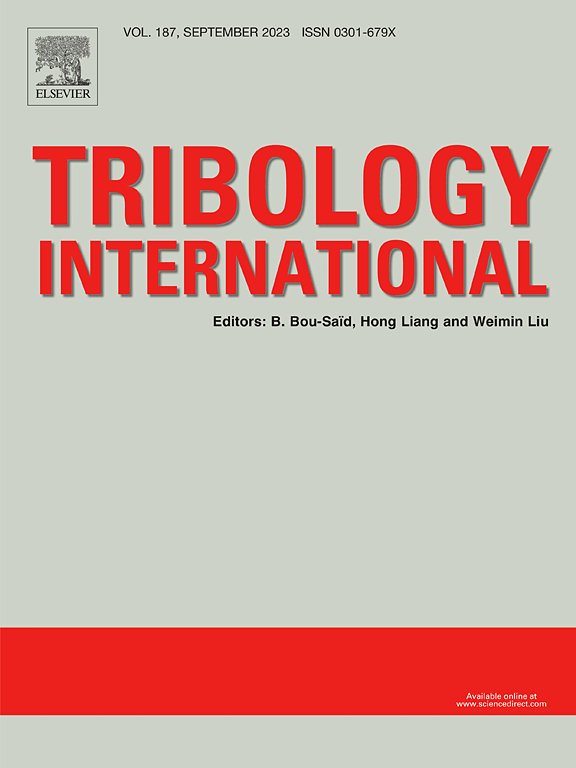Effect of porosity on surface deformation and subsurface layer produced by scratch tests of sintered low-alloy steel
IF 6.1
1区 工程技术
Q1 ENGINEERING, MECHANICAL
引用次数: 0
Abstract
This study explores the effect of porosity on surface deformation and subsurface hardening in sintered Fe-Mo-C steel. Samples were sintered at temperatures of 850°C (high porosity) and 1000°C (low porosity) using spark plasma sintering (SPS). Scratch tests were conducted at normal loads of 5 N and 10 N, and surface profiles were analyzed using profilometry, while scanning electron microscopy (SEM) and electron backscatter diffraction (EBSD) provided insights into microstructural changes and deformation mechanisms at the subsurface. Results indicated that low-porosity samples exhibited less material removal and a shallower tribologically transformed layer, with higher plastic deformation, dislocation density, and stronger pile-up formation at the edges of the scratch. In contrast, high-porosity samples displayed more extensive material removal, thicker transformed layers, and heterogeneous deformation, with pores acting as stress concentrators that facilitated crack initiation and propagation. The friction coefficient increased with load, particularly for low-porosity samples, due to a higher accumulation of material resisting the indenter’s movement. These findings highlight the significant role of porosity in governing the tribological performance and mechanical behavior of sintered steels, providing valuable insights for both mechanical and biomedical engineering applications.
孔隙率对烧结低合金钢表面变形及划伤试验产生亚表面层的影响
研究了孔隙率对Fe-Mo-C烧结钢表面变形和亚表面硬化的影响。样品分别在850℃(高孔隙率)和1000℃(低孔隙率)下进行放电等离子烧结(SPS)。在5 N和10 N的正常载荷下进行划伤测试,并使用轮廓术分析表面轮廓,同时扫描电子显微镜(SEM)和电子背散射衍射(EBSD)提供了对地下微观结构变化和变形机制的深入了解。结果表明,低孔隙率试样的材料去除较少,摩擦学转化层较浅,具有较高的塑性变形、位错密度和更强的划痕边缘堆积。相比之下,高孔隙率样品表现出更广泛的材料去除,更厚的转化层和非均匀变形,孔隙作为应力集中器,促进裂纹的萌生和扩展。摩擦系数随着载荷的增加而增加,特别是对于低孔隙率的样品,这是由于更多的材料积累抵抗压头的运动。这些发现强调了孔隙度在控制烧结钢的摩擦学性能和力学行为方面的重要作用,为机械和生物医学工程应用提供了有价值的见解。
本文章由计算机程序翻译,如有差异,请以英文原文为准。
求助全文
约1分钟内获得全文
求助全文
来源期刊

Tribology International
工程技术-工程:机械
CiteScore
10.10
自引率
16.10%
发文量
627
审稿时长
35 days
期刊介绍:
Tribology is the science of rubbing surfaces and contributes to every facet of our everyday life, from live cell friction to engine lubrication and seismology. As such tribology is truly multidisciplinary and this extraordinary breadth of scientific interest is reflected in the scope of Tribology International.
Tribology International seeks to publish original research papers of the highest scientific quality to provide an archival resource for scientists from all backgrounds. Written contributions are invited reporting experimental and modelling studies both in established areas of tribology and emerging fields. Scientific topics include the physics or chemistry of tribo-surfaces, bio-tribology, surface engineering and materials, contact mechanics, nano-tribology, lubricants and hydrodynamic lubrication.
 求助内容:
求助内容: 应助结果提醒方式:
应助结果提醒方式:


